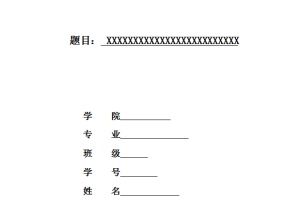摘 要
理性的企业合并能够促进企业效率的大幅度提升,同时有助于加强企业的协同能力,企业合并被越来越多地应用于商业竞争中。近二十年来,企业合并会计作为我国会计理论界和实务界共同关注的问题,一直处于会计争议领域的“风口浪尖”。在当前国际上已经取消了权益结合法的情况下,我国在参考国际相关准则规定的同时,根据自己国情的特色,做出以下判断,即我国企业合并会计处理方法有权益结合法和购买法两种方法。但是在会计实务中,由于企业经济业务的性质、两种会计处理方法的选择以及合并后产生的影响不同,出现了一些利用会计处理方法来获得更多利润的行为。因此如何选择和改进企业合并会计处理方法,已经成为当下我国会计理论界存在的现实问题。
关键词:企业合并;会计处理;购买法;权益结合法
ABSTRACT
Rational enterprise merger can promote the enterprise efficiency greatly, and it also helps to enhance the enterprise’s ability of collaboration, and the enterprise merger is more and more used in the commercial competition. In recent twenty years, accounting for business combinations as China’s accounting theory and practice of common concern, has been in in the field of accounting dispute “tuyere Langjian.” Under the current international has canceled the equity method, in China in reference to the relevant international standards, at the same time, according to the characteristics of its own national conditions, make the following judgments, namely our country “s enterprise merger accounting processing method pooling of interest method and purchase method. But in accounting practice, due to business properties, two kinds of accounting treatment have different methods of selection and the resulting merged effect, use accounting processing method to gain more profit. So how to select and improve the enterprise consolidation accounting treatment method, has become the practical problems of current accounting theory.
KeyWords: business combinations; accounting methods; acquisition method; pooling of interest method
目 录
诚信声明……………………………………………………………………………………………………………….. I
摘 要…………………………………………………………………………………………………………………… II
ABSTRACT…………………………………………………………………………………………………………. III
第一章 绪 论…………………………………………………………………………………………………. 1
1.1 选题背景与选题意义……………………………………………………………………………………. 1
1.1.1 选题背景……………………………………………………………………………………………. 1
1.1.2 选题意义……………………………………………………………………………………………. 1
1.2 国内外研究综述…………………………………………………………………………………………… 2
1.2.1 国外研究综述…………………………………………………………………………………….. 2
1.2.2 国内研究综述…………………………………………………………………………………….. 2
1.2.3 简要的评价………………………………………………………………………………………… 3
1.3可能的创新点……………………………………………………………………………………………….. 3
第二章 企业合并会计处理方法………………………………………………………………… 4
2.1企业合并的类型……………………………………………………………………………………………. 4
2.1.1 按企业合并的性质划分………………………………………………………………………. 4
2.1.2 按合并前后是否受同一方控制划分…………………………………………………….. 4
2.2 企业合并的两大动机……………………………………………………………………………………. 5
2.2.1 企业合并的战略动机………………………………………………………………………….. 5
2.2.2 企业合并的财务动机………………………………………………………………………….. 5
2.3 企业合并的会计处理方法的发展与优缺点……………………………………………………. 5
2.3.1 企业合并会计处理方法的演进与发展…………………………………………………. 5
2.3.2 企业合并会计处理方法的优缺点………………………………………………………… 6
第三章 企业合并会计处理的比较及问题分析…………………………………….. 7
3.1 企业合并会计处理的比较…………………………………………………………………………….. 7
3.1.1 中外企业合并的比较………………………………………………………………………….. 7
3.1.2 新旧企业合并会计准则的比较……………………………………………………………. 7
3.1.3 权益结合法和购买法的差异比较………………………………………………………… 8
3.2 会计处理方法存在的问题分析……………………………………………………………………… 8
3.2.1 企业合并准则的问题分析…………………………………………………………………… 8
3.2.2 应用权益结合法存在的问题分析………………………………………………………… 9
3.2.3 应用购买法存在的问题分析……………………………………………………………….. 9
第四章 万达集团并购美国AMC娱乐的案例分析…………………………… 10
4.1 合并情况简述…………………………………………………………………………………………….. 10
4.1.1 合并双方基本情况……………………………………………………………………………. 10
4.1.2 换股合并过程…………………………………………………………………………………… 10
4.2 合并会计方法的选择及结果分析………………………………………………………………… 10
4.2.1 万达并购AMC的会计方法………………………………………………………………. 10
4.2.2 万达并购AMC的结果分析……………………………………………………………….. 11
4.3 合并会计处理方法选择的影响…………………………………………………………………….. 11
4.3.1 对资产负债表的影响…………………………………………………………………………. 11
4.3.2 对利润表的影响……………………………………………………………………………….. 12
4.3.3 对重要财务指标的影响…………………………………………………………………….. 12
第五章 完善企业合并会计处理方法的措施……………………………………….. 14
5.1 完善企业合并会计准则的措施……………………………………………………………………. 14
5.2 完善权益结合法的措施………………………………………………………………………………. 14
5.3 完善购买法的建议……………………………………………………………………………………… 14
结 论………………………………………………………………………………………………………………….. 16
参考文献…………………………………………………………………………………………………………….. 17
致 谢………………………………………………………………………………………………………………….. 18





